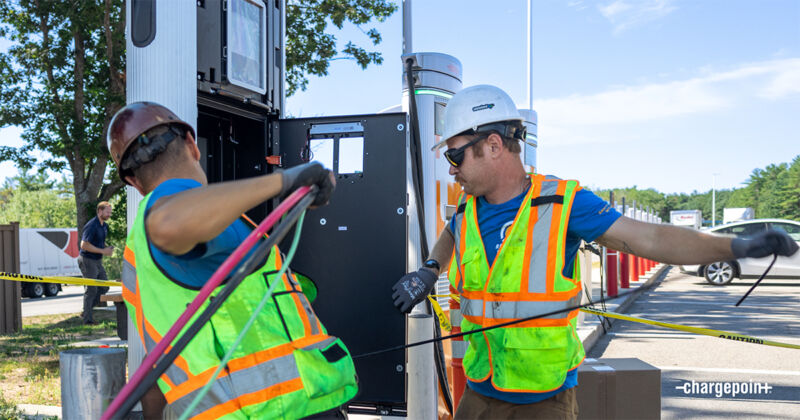
By now, most of us are aware of the poor state of reliability when it comes to charging electric vehicles in public. In fact, it’s safe to say that the superior charging experience within Tesla’s walled Supercharger garden has been the prime consideration for other automakers to buy into what’s now called the North American Charging Standard, despite little reason to believe that third-party charging networks will be any more reliable simply because they change plugs. Happily, the federal government has enacted new uptime requirements to qualify for the $5 billion set aside for high-speed charging networks as part of the New Electric Vehicle Infrastructure program.
To help it get there, EV charging network ChargePoint has opened a new Network Operations Center to monitor its network of more than 243,000 charging ports in North America and Europe.
It says that once the system is fully implemented, the company plans to get to nearly 100 percent uptime, up from what it says is 96 percent today. (ChargePoint says that in the absence of a standard measure of uptime, it uses “the portion of time each individual charging port can dispense energy, as a driver pulling in for a charge would expect, not averaged across a bank of charging stations at a single address.”
“Accessible, reliable EV charging plays a critical role in the ongoing shift to electric mobility, and our Network Operations Center is prepared to ensure reliability at scale in support of EV adoption,” said Rick Wilmer, ChargePoint’s COO. “We believe that our methodology of calculating uptime is the most transparent in the industry and the most relevant to drivers, which provides us with the necessary benchmark to build upon. We are improving the charging experience across the entire ecosystem—network, installer, site host, and app user—to ensure that every driver who needs a charge has the best possible charging experience.”
ChargePoint says the NOC, which opened late last month, will perform constant proactive monitoring “to ensure almost any charging station issue can be instantly and remotely identified across more than 243,000 active ports under management on the ChargePoint network.” Some of that will involve machine learning and natural language processing to help find those malfunctioning chargers so the station owners can be alerted quickly and ChargePoint can schedule maintenance or repairs.
The facility also includes a 16,000-square-foot Advanced Test Facility, where EV charging stations are beaten up and subjected to harsh environmental conditions to stress-test them. ChargePoint told Ars that “a charger’s lifespan is the equivalent of placing an iPhone or a laptop outdoors in the Phoenix heat for 10+ years with the expectation of software and hardware reliability and resistance to vandalism or accidents, making design, engineering, and manufacturing of the components critical on the front end of the reliability curve.”
A repeated concern Ars has heard from the charging industry is that there is a lack of qualified people to fix broken chargers. To that end, ChargePoint is also developing a training and certification program, which it says it expects will be the most comprehensive in the industry. That training program will go live early in 2024.
https://arstechnica.com/?p=1959541

